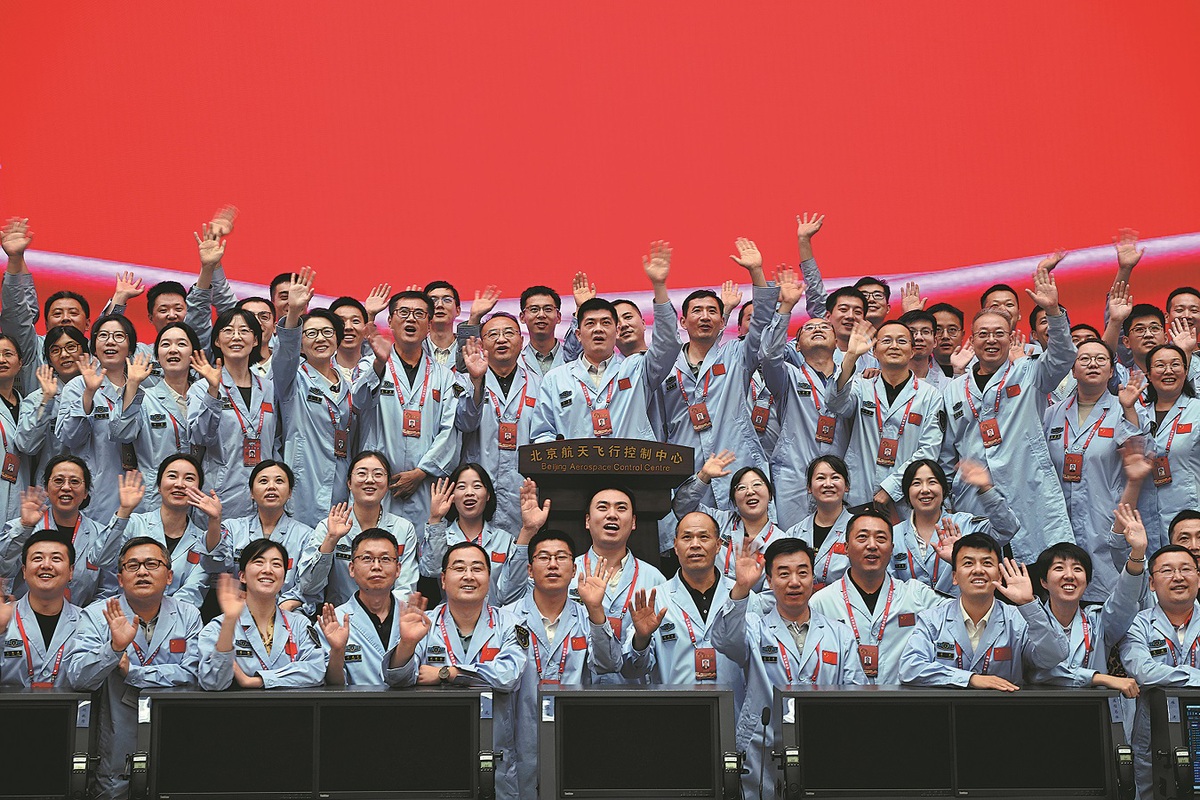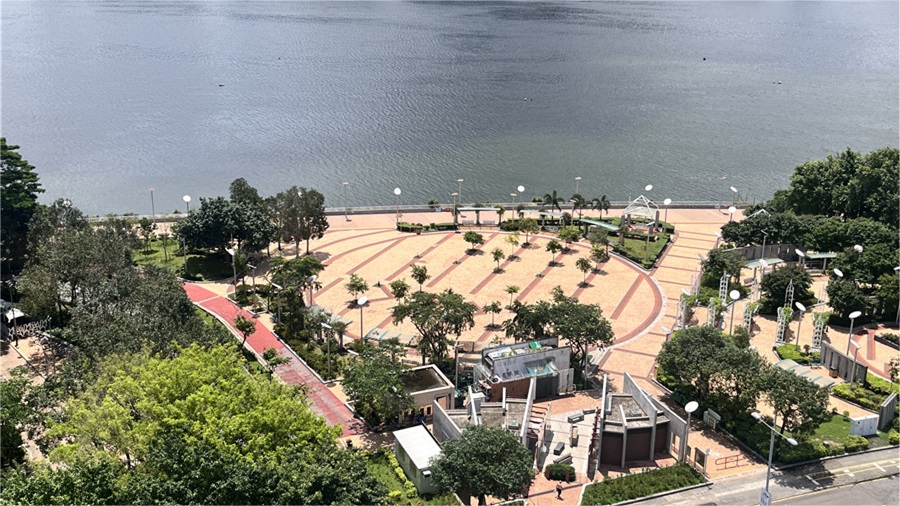Xi hails success of lunar mission
President Xi Jinping sent a congratulatory message on Tuesday on the success of the Chang'e 6 mission, which for the first time brought scientifically precious samples from the moon's far side back to Earth.
On behalf of the Communist Party of China Central Committee, the State Council, and the Central Military Commission, Xi, who is also general secretary of the CPC Central Committee and chairman of the CMC, extended warm congratulations and sincere greetings to the Chang'e 6 mission headquarters and all those who participated in the historic mission.
In his message, the president noted that the Chang'e 6 probe realized the world's first sample-return endeavor from the lunar far side, marking a new milestone in China's effort to become a global power in the space industry as well as in science and technology.
"Over the past 20 years, all comrades taking part in lunar exploration programs have been upholding the spirit of the cause, continuing to climb the peak of science and technology. You have made world-class achievements and established a high-quality, efficient path for exploring the moon," Xi said. "Your extraordinary feats will be enshrined in the memory of our motherland and the people."
The president expressed the hope that those who participated in the mission would make full use of the new samples in scientific studies and keep working on deep-space explorations and other major space projects.
" (You shall) march toward building the country into a major power in space, achieving new feats in exploring the universe and benefiting humanity, and making new contributions to Chinese modernization and national rejuvenation," Xi said, also encouraging the mission's participants to continue strengthening international cooperation.
Carrying the unique lunar samples, the reentry capsule of the Chang'e 6 robotic probe touched down at 2:07 pm on Tuesday on its preset landing site in Siziwang Banner in the Inner Mongolia autonomous region, successfully completing a 53-day voyage that involved a host of complex and challenging maneuvers.
The reentry and landing processes started at around 1:20 pm after the mission controllers at the Beijing Aerospace Control Center uploaded high-accuracy navigation data to the orbiter-reentry capsule combination.

Staff members at the Beijing Aerospace Control Center pose for a group photo on Tuesday upon the successful completion of the Chang'e 6 mission. (JIN LIANGKUAI/XINHUA)
The capsule separated from the orbiter about 5,000 kilometers above the southern Atlantic Ocean and began to descend toward Earth.
It entered the atmosphere at around 1:41 pm at a speed of 10.9 kilometers per second, close to the second cosmic velocity, and then bounced out of the atmosphere in a maneuver to reduce its ultrafast speed.
The second cosmic velocity, also known as the escape velocity, refers to the ultrafast speed required to escape the gravitational field of a celestial body.
After a short while, the capsule reentered the atmosphere and kept gliding down. When the craft was about 10 km above ground, it released its parachutes and landed smoothly on the sandy grassland. The entire landing process was operated by the capsule itself with the help of its sensors and computers.
Shortly after touchdown, recovery personnel sent from the Jiuquan Satellite Launch Center arrived at the landing site in helicopters and off-road vehicles. The capsule is scheduled to be transported by an airplane to Beijing on Wednesday, where it will be opened by experts at the China Academy of Space Technology.
The samples will be taken out of the capsule and weighed before being delivered, in due course, to the National Astronomical Observatories, a subsidiary of the Chinese Academy of Sciences, according to the China National Space Administration.
The Chang'e 6 probe, representing the world's first attempt to bring samples from the far side of the moon, was launched by a Long March 5 heavy-lift carrier rocket on May 3 from the Wenchang Space Launch Center in Hainan province.
The 8.35-ton spacecraft was designed and built by the China Academy of Space Technology, a subsidiary of China Aerospace Science and Technology Corp, and consisted of four components — an orbiter, a lander, an ascender, and a reentry capsule.
After a host of sophisticated steps, the lander touched down at the South Pole-Aitken Basin, one of the largest-known impact craters in the solar system, on the morning of June 2. The landing marked the second time a spacecraft ever arrived on the lunar far side.
The vast region had never been reached by any spacecraft until January 2019, when the Chang'e 4 probe landed in the South Pole-Aitken Basin. The Chang'e 4 surveyed areas surrounding its landing site, but did not collect and send back lunar samples.
The Chang'e 6 lander worked for 49 hours on the moon's far side, using a mechanical arm and a drill to collect surface and underground materials. Meanwhile, several items of scientific equipment were activated to conduct survey and analysis assignments. After the tasks were completed, the sample-loaded ascender lifted off from the lunar surface and reached lunar orbit to dock with the reentry capsule and transfer the samples. In the final leg of the mission, the orbiter-reentry capsule combination flew back to the Earth's orbit, before separating on Tuesday.
The landscapes and physical characteristics of the lunar far side, which permanently faces away from Earth, are very different from those of the near side, which is visible from Earth, according to scientists. The new samples are expected to offer researchers around the globe useful clues to answer questions related to the moon, and will likely bring a range of invaluable scientific payoffs, they said.
Photos
Related Stories
- Xi calls for strong sci-tech nation by 2035
- Commentary: Chang'e-6 mission sheds new light on humanity's journey into space
- Action plan issued for Sino-Polish cooperation
- Xi Story: Kuliang, an enduring Sino-American bond of love, friendship and understanding
- Xi extends congratulations on complete success of Chang'e-6 mission
- Xi urges youths of China, US to bolster bonds
Copyright © 2024 People's Daily Online. All Rights Reserved.









